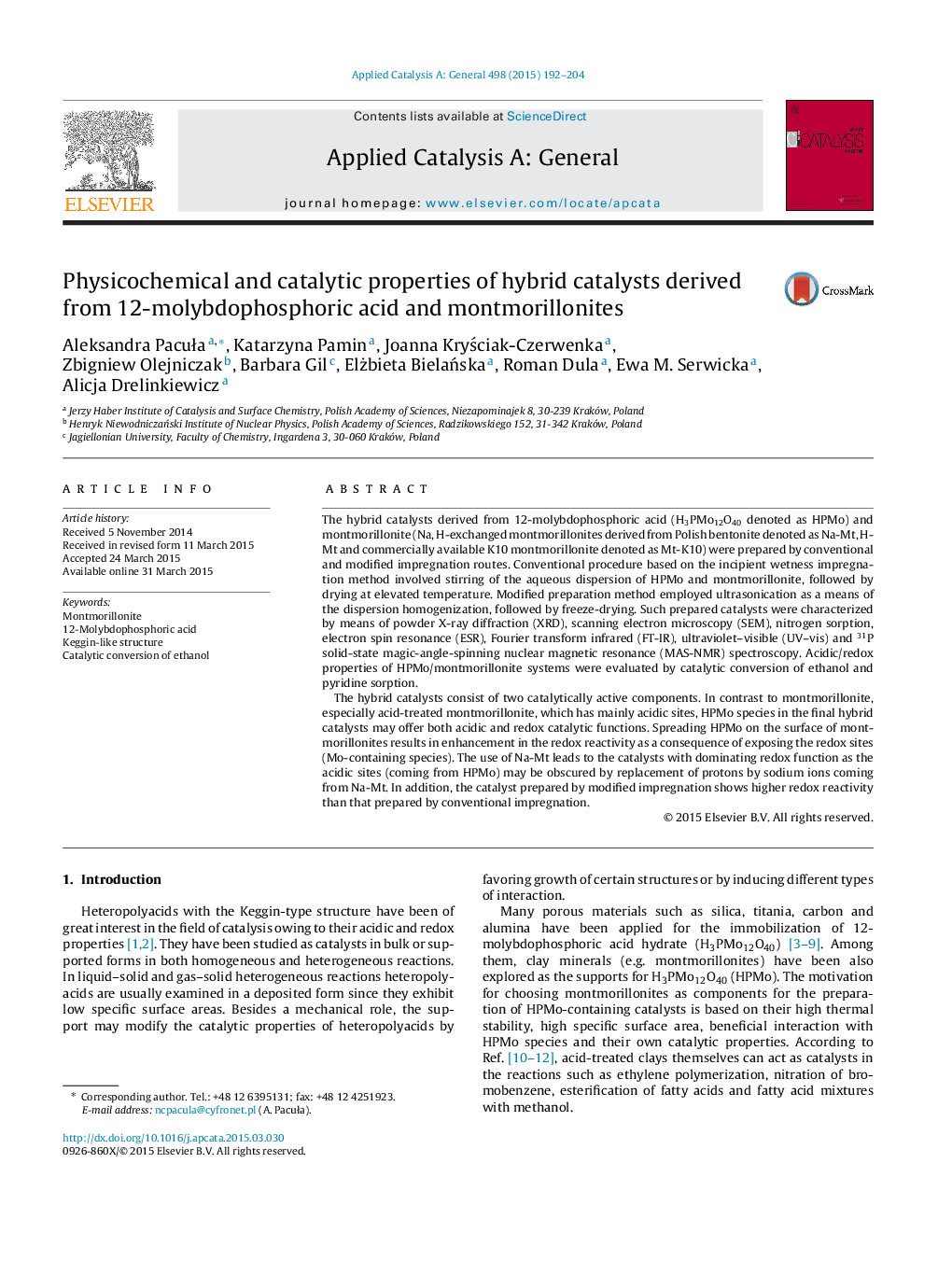| کد مقاله | کد نشریه | سال انتشار | مقاله انگلیسی | نسخه تمام متن |
|---|---|---|---|---|
| 39132 | 45807 | 2015 | 13 صفحه PDF | دانلود رایگان |
• H3PMo12O40 (HPMo) is deposited on montmorillonites (Na-Mt, H-Mt, Mt-K10).
• Two impregnation methods are applied to disperse H3PMo12O40 on montmorillonites.
• Stability of supported H3PMo12O40 is monitored by NMR and FT-IR.
• Acidic/redox properties of the hybrid catalysts are determined in ethanol conversion.
• Spreading HPMo on montmorillonites enhances redox and suppresses acidic functions.
The hybrid catalysts derived from 12-molybdophosphoric acid (H3PMo12O40 denoted as HPMo) and montmorillonite (Na, H-exchanged montmorillonites derived from Polish bentonite denoted as Na-Mt, H-Mt and commercially available K10 montmorillonite denoted as Mt-K10) were prepared by conventional and modified impregnation routes. Conventional procedure based on the incipient wetness impregnation method involved stirring of the aqueous dispersion of HPMo and montmorillonite, followed by drying at elevated temperature. Modified preparation method employed ultrasonication as a means of the dispersion homogenization, followed by freeze-drying. Such prepared catalysts were characterized by means of powder X-ray diffraction (XRD), scanning electron microscopy (SEM), nitrogen sorption, electron spin resonance (ESR), Fourier transform infrared (FT-IR), ultraviolet–visible (UV–vis) and 31P solid-state magic-angle-spinning nuclear magnetic resonance (MAS-NMR) spectroscopy. Acidic/redox properties of HPMo/montmorillonite systems were evaluated by catalytic conversion of ethanol and pyridine sorption.The hybrid catalysts consist of two catalytically active components. In contrast to montmorillonite, especially acid-treated montmorillonite, which has mainly acidic sites, HPMo species in the final hybrid catalysts may offer both acidic and redox catalytic functions. Spreading HPMo on the surface of montmorillonites results in enhancement in the redox reactivity as a consequence of exposing the redox sites (Mo-containing species). The use of Na-Mt leads to the catalysts with dominating redox function as the acidic sites (coming from HPMo) may be obscured by replacement of protons by sodium ions coming from Na-Mt. In addition, the catalyst prepared by modified impregnation shows higher redox reactivity than that prepared by conventional impregnation.
Figure optionsDownload high-quality image (146 K)Download as PowerPoint slide
Journal: Applied Catalysis A: General - Volume 498, 5 June 2015, Pages 192–204
